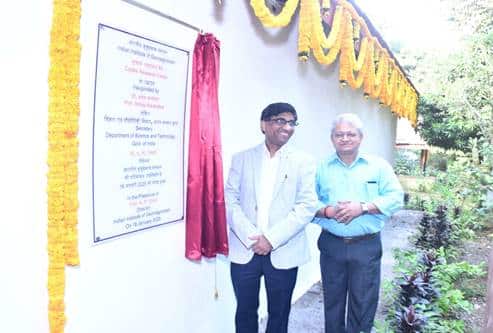Inauguration of Colaba Research Centre

The Indian Institute of Geomagnetism (IIG) has taken a significant step forward in the field of geomagnetic research with the inauguration of the Colaba Research Centre. This historic event was marked by the presence of Professor Abhay Karandikar, Secretary of the Department of Science and Technology (DST). The centre is not just a new facility; it is a continuation of a legacy that dates back over 180 years. The Colaba geomagnetic observatory has been a cornerstone of geomagnetic studies in India, and this new centre aims to digitize and modernize its extensive archives.
A Historic Site with a Rich Legacy
The Colaba Research Centre is located at one of the oldest observatories in India. This site has been pivotal in documenting geomagnetic data since 1841. During the inauguration, Professor Karandikar toured the facility, which houses ancient equipment that has recorded geomagnetic storms over the years. These instruments are not merely relics; they represent a significant chapter in the history of scientific exploration in India.
The observatory has been responsible for the first continuous magnetic observations in the country. It has preserved invaluable data through magnetograms, microfilms, and various volumes. One of its most notable achievements was recording the Super-intense Carrington event of September 1-2, 1859, when the magnetic field experienced a dramatic decrease of 1600 nT. This event is a critical reference point for understanding geomagnetic storms and their impact on Earth.
Digitizing Historical Data for Future Insights
One of the primary objectives of the Colaba Research Centre is to digitize the archived data sets from the Colaba geomagnetic observatory. This initiative will integrate modern techniques to provide valuable insights into historical geomagnetic storms. By digitizing over 180 years of data, researchers will create a benchmark for predicting the probability of future geomagnetic storms.
The centre is equipped with a dedicated staff of nine professionals who will focus on this important task. The digitization process will not only preserve the historical data but also make it accessible for future research. This effort is crucial for understanding the long-term trends in geomagnetic activity and its implications for space weather.
Research Activities and Societal Applications
In addition to digitization, the Colaba Research Centre will engage in various research activities related to space weather and its impacts. Director of IIG, Professor A P Dimri, highlighted the institute’s work on the Earth’s geomagnetic protective shield and the study of wave-particle interactions in the Earth’s magnetosphere. These studies are essential for understanding how solar activity affects our planet.
The research conducted at IIG has significant societal applications. It contributes to space weather forecasting, environmental monitoring, and a deeper understanding of Earth’s magnetic field. The centre also provides real-time geomagnetic field variations to international geomagnetic repositories, ensuring that India remains a key player in global geomagnetic research.
The establishment of the Colaba Research Centre marks a new chapter in the ongoing journey of the IIG, which has been dedicated to basic and applied research in geomagnetism, geophysics, and related fields since its inception in 1971. With 13 magnetic observatories across India and a World Data Center for Geomagnetism, the IIG is poised to make significant contributions to our understanding of geomagnetic phenomena in the years to come.
Observer Voice is the one stop site for National, International news, Sports, Editor’s Choice, Art/culture contents, Quotes and much more. We also cover historical contents. Historical contents includes World History, Indian History, and what happened today. The website also covers Entertainment across the India and World.
Follow Us on Twitter, Instagram, Facebook, & LinkedIn

